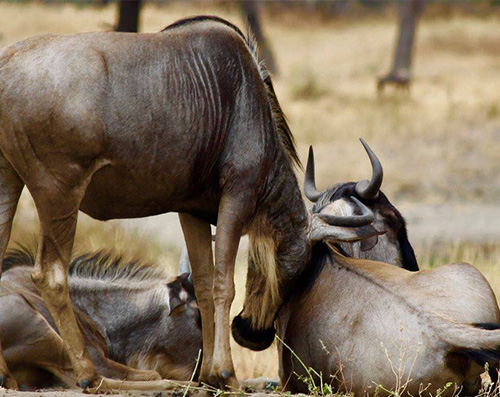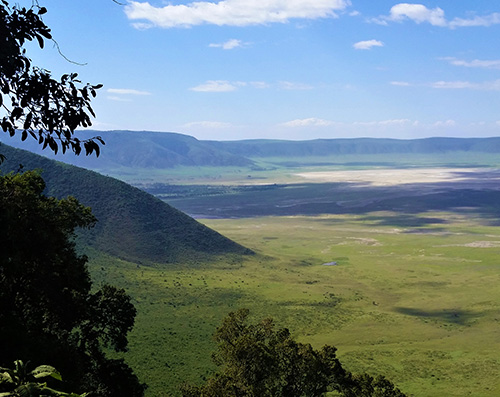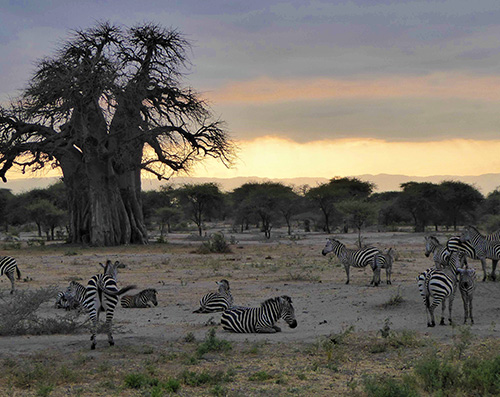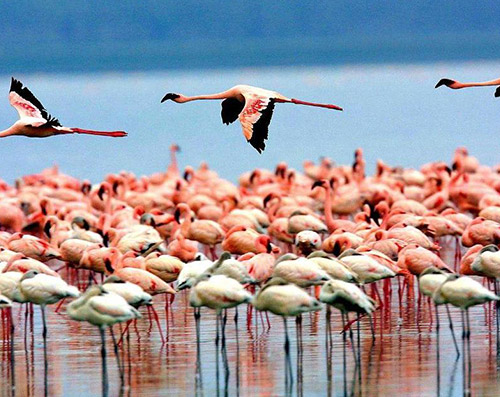- When to go All year round but if your interest is to follow the wildebeest migration then the best time for this is December-July. And to see predators, June-October.
- What to do Game drive for wildlife viewing, Hot air balloon safaris, walking safaris, picnicking, Camping, Lodging, Cultural tourism, Visit neighboring Ngorongoro Crater, Olduvai Gorge, Ol Doinyo Lengai volcano and Lake Natron’s flamingos.
- What game will you seeThere are so many different species in the Serengeti that this list could go on forever. The Serengeti’s main attraction is the Great Migration, consisting of up to 2 million wildebeest, 200,000 zebras and 350,000 Thompson, impala and grant’s gazelles.The predator viewing opportunities in here are better than anywhere else with 3-4,000 lions, large number of cheetah, hyena, and leopard. Besides that, eland, topi, hartebeest, buffalo, elephant, bat-eared fox, serval, porcupine, hyrax, aardvark, giraffe, jackal, mongoose, monitor lizard, crocodile, and various kinds of primates like baboons, vervet, and colobus monkeys are also seen in here with ease. Moreever, it is home to upwards of 500 bird species and over more than 500 species of birds.
The Endless plains….. The Vastness…. the scent and the wild voices of nature whispering at you. Giving an impression of travelling back in time, the national park of Serengeti is perhaps the most famous wildlife refuge in the world. Its ecosystem is among the oldest on earth. Inherent characteristics like vegetation, climate, and fauna have barely changed at all ove rhte past million years. The Olduvai Gorge whihc is an archaeological site inside the park contains evidence of existence of early men about two million years ago. The pattersn of life, adaptation, migration, and eventually death are as old as the hills and plains themselves. The eco-system extends over a much larger area and includes the Maasai Mara in Kenya and the Ngorongoro Conservation Area, linking over 25,000 km2 of land in which animals can move freely. Much of this is nutritious grassland which acts as a magnet for wildebeest, zebra, impala and Thomson’s gazelle.
Serengeti is the oldest and most popular national park, also a world heritage site and recently proclaimed a 7th world wide wonder, the Serengeti is famed for its annual migration, when some six million hooves pound the open plains, as more than 200,000 zebra and 300,000 Thomson’s gazelle join the wildebeest’s trek for fresh grazing. Even in the absence of the migration, Serengeti is capable of facilitating an admirable game viewing experience in Africa. Herds of buffalo, small and large groups of elephant, giraffe, eland, topi, kongoni, impala, and gazelles help the park in doing so. The Serengeti National Park has four separate sections, each with its own unique features and landscapes: the Southern Plains, Seronera (Central), Western Corridor, and Northern Serengeti.
The southern plain of Serengeti is best described as the “classic Serengeti” and is characterized by short grass plains and flat, open expanses. Seronera which is the famous central territory of Serengeti is located just north of the shrot grass plains. It is famous for open plains, kopjes, and resident and migrating gamees including large number of leopard, cheetah, and lion. To the west of Lake Victoria stretches Western Corridor whihc is home to the Grumeti and Mbalageti rivers which support dense vegetation and evergreen riparian forest. The area falling in between Seronera and border with Kenya is called Northern Serengeti, an area of gently rolling country dotted with occasional hills and kopjes, broken by small rivers. This is where visitors might be at the right place at the right time to view the migration river crossings of the Mara River, made famous by National Geographic documentaries.





